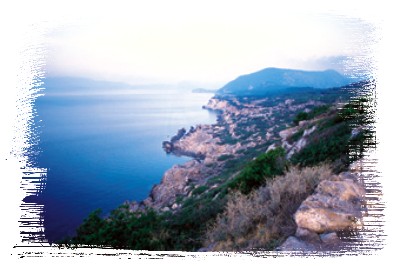

'Peraeion'
or 'Peraea' was the name often given in antiquity to stretches of
coastline, which were across á body of water from an important city. The
Peraea of Corinth, on the other side of the Gulf of Corinth, included the
whole land to the Northwest of the Isthmus, where Loutraki and Perachora
stand these days. The area was first settled around 750 BC, by
Corinthians, whose occupation of the Peraea made them masters of the
entire Gulf of Corinth. In 392 BC, during the Corinthian War, Peraea was
captured by Agesilaus of Sparta. In 243 BC, Peraea came into the hands of
Aratus and the Achaean Federation, and enjoyed á period of renewed
prosperity. When the Romans devastated Corinth in 146 BC, Peraea came
under their control and was totally depopulated. The centre of interest of
the new conquerors shifted to Therma, which was stood on the site occupied
by Loutraki now. It was not even the late fourteenth century that Peraea
came back into the history books, and won an important position.

Until
recently, it was believed that the Corinthian colony stood on the shores
of the Vouliagmeni lagoon, since many traces of housing and fortifications
had come to light there. This view is now questioned, and it seems more
likely that the settlement was further to the north, near the village of
Asprokampos, while the buildings at Vouliagmeni have been interpreted as
á camp or place of refuge near the sanctuary of Hera.